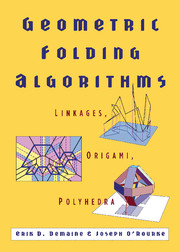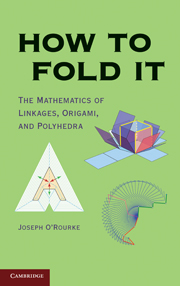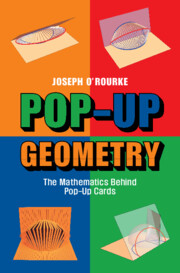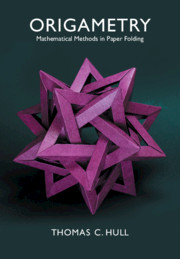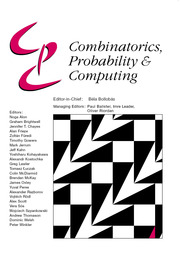Geometric Folding Algorithms
Did you know that any straight-line drawing on paper can be folded so that the complete drawing can be cut out with one straight scissors cut? That there is a planar linkage that can trace out any algebraic curve, or even 'sign your name'? Or that a 'Latin cross' unfolding of a cube can be refolded to 23 different convex polyhedra? Over the past decade, there has been a surge of interest in such problems, with applications ranging from robotics to protein folding. With an emphasis on algorithmic or computational aspects, this treatment gives hundreds of results and over 60 unsolved 'open problems' to inspire further research. The authors cover one-dimensional (1D) objects (linkages), 2D objects (paper), and 3D objects (polyhedra). Aimed at advanced undergraduate and graduate students in mathematics or computer science, this lavishly illustrated book will fascinate a broad audience, from school students to researchers.
- Fascinating, tangible, accessible cutting-edge research with applications throughout science and engineering
- Full color throughout
- Top notch authors: Erik Demaine won a MacArthur fellowship in 2003 for his work on the mathematics of origami
Reviews & endorsements
'Demaine and O'Rourke are among the best-qualified authors for a book on this subject; and the book that they have written is a delight … it is exceptionally clear and readable. It could be read for pleasure by any mathematics undergraduate, and much of it (though not all) by amateurs with a high school mathematics background … although there are sections that some amateurs will skip, the level is always kept as elementary as locally possible. This book should be in all university libraries, and many professional and amateur mathematicians will want to add it to their personal collections.' Robert Dawson (Halifax), Zentralblatt Math
'This book is one of those rare mathematics books that I had a hard time putting down. I wanted to keep reading to find the next insight. … This is a serious mathematics book whose explorations have significant applications and real mathematical profundity, wonderfully mixed with some fun recreational mathematics. … The book has a useful index and an extensive bibliography, so when you finish reading, it will remain a valuable resource far into the future. There is a lot of material in this book and it is really a lot of fun. I highly, highly recommend this book to anyone with even a passing interest in folding mathematics.' MAA Reviews
'The authors explain step-by-step interesting solutions of some folding problems. This splendidly illustrated book can be interesting for advanced undergraduate students in mathematics and computer science as well as for geometers and computer specialists who can find many new ideas and impulses …' EMS Newsletter
Product details
August 2007Hardback
9780521857574
488 pages
259 × 183 × 28 mm
1.376kg
82 b/w illus. 330 colour illus. 16 tables
Available
Table of Contents
- Introduction
- Part I. Linkages:
- 1. Problem classification and examples
- 2. Upper and lower bounds
- 3. Planar linkage mechanisms
- 4. Rigid frameworks
- 5. Reconfiguration of chains
- 6. Locked chains
- 7. Interlocked chains
- 8. Joint-constrained motion
- 9. Protein folding
- Part II. Paper:
- 10. Introduction
- 11. Foundations
- 12. Simple crease patterns
- 13. General crease patterns
- 14. Map folding
- 15. Silhouettes and gift wrapping
- 16. The tree method
- 17. One complete straight cut
- 18. Flattening polyhedra
- 19. Geometric constructibility
- 20. Rigid origami and curved creases
- Part III. Polyhedra:
- 21. Introduction and overview
- 22. Edge unfolding of polyhedra
- 23. Reconstruction of polyhedra
- 24. Shortest paths and geodesics
- 25. Folding polygons to polyhedra
- 26. Higher dimensions.

